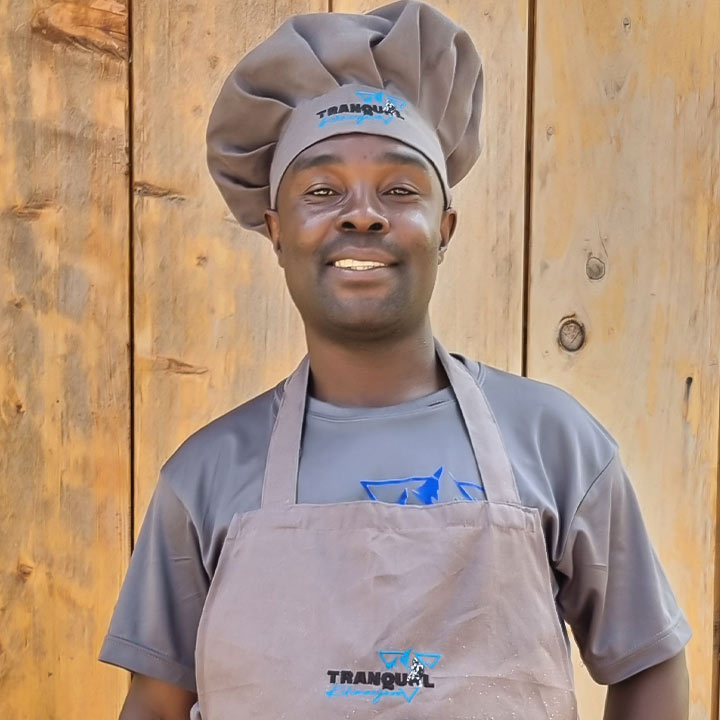Food Along Lemosho Route
Meal Plan and What you will Eat on Kilimanjaro
When you climb Kilimanjaro on the Lemosho Route, eating well keeps you strong for the 7-8 day trek. Here’s how we handle meals, what you’ll eat, and how we make it work for you—no matter what you need.
Who Makes Your Food?

Our skilled cooks take care of all your meals on the mountain. They whip up breakfast, lunch, and dinner every day, following a set menu. But if you’ve got special food needs—like no meat or low sugar—just tell us before you start. We’ll tweak the plan to fit what you want or what your doctor says. Our cooks know how to keep things healthy, avoiding too much red meat or greasy stuff, so you feel good while hiking.
What’s on the Menu?
Breakfast | Lunch | Dinner |
Tea, Coffee, Hot Chocolate | Tea, Coffee, Hot Chocolate | Tea, Coffee, Hot Chocolate |
| Vegetable Soup | Vegetable Soup |
Toast/Bread, Biscuits with Margarine, Jam, Peanut Butter, Honey | Bread, Biscuits or Pancakes with Jam, Peanut Butter, Honey | Bread, Biscuits or Pancakes with Jam, Peanut Butter, Honey |
Eggs, Sausages or Bacon | Chicken Curry, Rice, Chapati, Green Beans | Spaghetti with meat sauce |
Porridge or Pancakes | Snack: Peanuts, Popcorn, Cake, Cookies | Potatoes, Rice, Pasta |
Fresh Fruit: Mango, Orange, Pineapple, Banana, Avocado or Watermelon | Fresh Salad: Tomato, Cucumber, Onion, Carrots, Green Peppers | Fresh Vegetables: Carrots, Peas, Tomato, Beans, Greens |
You’ll get three meals daily:
Breakfast: Think hearty stuff like eggs (boiled or fried), porridge, toast with jam or peanut butter, sausages, and fresh fruit like bananas or oranges. Plus, tea, coffee, or hot chocolate to warm you up.
Lunch: We pack this in the morning for you to carry. It might be a boiled egg, a piece of chicken, sandwiches, a snack (like peanuts or cookies), and a fruit. You’ll also get a drink to sip on the trail.
Dinner: After a long day, you’ll start with veggie soup, then dig into a main dish—maybe chicken with sauce, rice, pasta, or potatoes, plus some fresh veggies like carrots or peas.
Every meal comes with hot drinks—tea, coffee, or hot chocolate. We mix in fresh fruits and veggies for vitamins and energy, keeping you ready for the climb.
Special Diets? No Problem!
Got a specific way you eat? Let us know early, and we’ll sort it out:
Low Carb, Gluten-Free, or Diabetic: We’ll skip bread, rice, and sugary stuff. Instead, you’ll get more eggs, meat, cheese, and low-carb veggies to keep your energy up without messing with your sugar levels.
Vegan or Vegetarian: We’ll make tasty plant-based meals—think beans, lentils, veggies, and fruits. No animal stuff, but still packed with power for the trek.
Religious Needs:
Halal: We’ll prep fresh food following Islamic rules, with Muslim-friendly guides and cooks who set up prayer spots and halal meals.
Kosher: For Jewish climbers, we’ll follow kosher laws—think fruits, veggies, pasta, tuna, and special Shabbat treats like grape juice and rolls. We can use disposable plates or your own pots if you bring them.
If you need rare foods (like special powders or bars), bring them along. Our cooks can use them to make what you like. Just pack enough for the whole trip!
Celebrating on the Mountain
Climbing for a big moment—like a birthday, honeymoon, or proposal? Tell us, and we’ll add a cake or even champagne to surprise your group. It’s a fun way to mark the occasion up high!
Staying Fresh and Hydrated
Food Freshness: We use cooler boxes to keep ingredients good the whole trek. Porters carry everything, so it’s ready when our cooks need it.
Water: You need 3-5 liters a day to fight altitude sickness and stay strong. We get water from mountain streams, treat it with purifying tablets, and serve it at camp. Bring a bottle that holds at least 2 liters—water gets harder to find higher up. Hot drinks like tea and coffee are on tap, but skip too much coffee—it can dry you out and slow your body’s adjustment to the height.
Dealing with No Appetite
Altitude can make you not want to eat, especially as you climb higher on Lemosho. That’s normal, but you’ve got to try anyway—food and water help you adjust and keep going. Our cooks make meals that look good and taste great, with bright veggies and fruits to tempt you. Snacks like nuts or bars can fill in if you’re struggling.
What About Snacks?
We serve snacks with afternoon tea—think peanuts, popcorn, or cookies. But bring your favorites too! Try these:
Nuts or Trail Mix: Full of protein and energy, they won’t melt or freeze.
Energy Bars: Quick boost with nuts and seeds.
Jerky or Cheese: Great for low-carb diets, lots of protein.
Candies or Gummies: Boost sugar fast and keep your mouth from drying out.
Sports Drink Mixes: Add to water for extra electrolytes.
On summit night, we’ll have a midnight snack—hot chocolate, soup, or biscuits—to power you to Uhuru Peak.
A Day of Eating on Lemosho
Morning: Wake up to eggs, toast, fruit, and a hot drink.
Midday: Grab your packed lunch—chicken, a sandwich, and a snack—while hiking.
Afternoon: Tea or coffee with peanuts or biscuits when you reach camp.
Evening: Warm up with soup, then enjoy meat, veggies, and rice or pasta.
Why It Matters
Lemosho’s a long haul, and good food fuels every step—through forests, up rocky trails, and to the top. We make sure it’s tasty, healthy, and fits you, so you’ve got the energy to enjoy the views and hit the summit strong! Tell us what you need, and we’ll handle the rest.